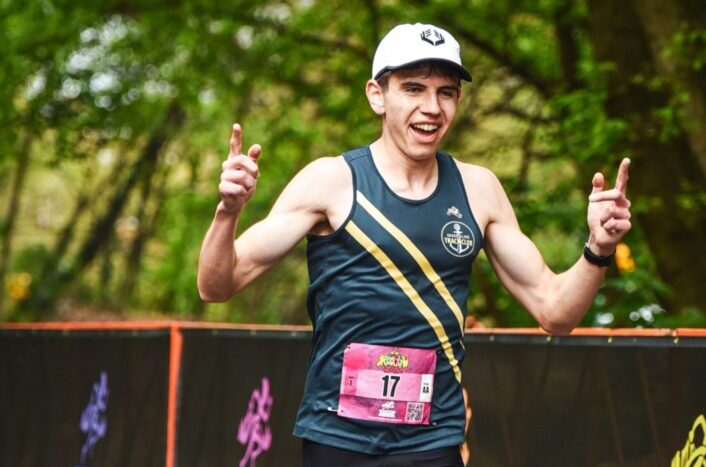photo credit: Marathon Foto
As an elite marathon runner, I’ve experienced firsthand the highs and soul-crushing lows of long-distance running. One of the biggest challenges I’ve faced is figuring out how to fuel my body properly to avoid “bonking” – that dreaded moment when you feel like you’ve hit a wall and just can’t go on.
The Importance of Carbs and Electrolytes
Let’s talk about carbohydrates first. During a marathon, your body burns through a tremendous amount of energy, primarily in the form of carbs. To keep your energy levels steady, you need to consume at least 30-60 grams of carbohydrates per hour. This might sound like a lot, but it’s crucial for maintaining your pace and preventing a crash of energy.
Electrolytes are just as important. When you sweat, you lose essential minerals like sodium, potassium, and magnesium. These need to be replaced to prevent cramping and maintain muscle function. The UnTapped Mapleaid drink mix is a fantastic way to replenish these electrolytes and stay hydrated throughout your run. During training runs, I often carry Mapleaid in a soft bottle.
My Race-Day Plan
One of the most important lessons I’ve learned is the necessity of having a race-day fueling plan – and sticking to it. This plan isn’t something you should improvise on the fly; it needs to be practiced during your training runs to ensure it works for you.
Fueling Your Marathon: This is what my marathon-day fueling strategy looks like:
1. Pre-Race: I start with a light breakfast about three hours before the race. This is always oatmeal, a banana, peanut butter, and a generous drizzle of UnTapped maple syrup. About 30 minutes before the race, I have half of an UnTapped waffle with some Mapleaid drink mix.
2. During the Race: I aim to consume about 50 grams of carbs per hour. This typically means one Salted Cocoa Energy Gel every 30 minutes, combined with sips of Mapleaid drink mix. I carry these in my shorts’ pockets for easy access. The Salted Cocoa gel is my go-to because it’s not too sweet and the hint of added salt helps replace lost sodium. I know the exact taste I can expect every 30 minutes, providing some comfort during an intense race.
3. Post-Race: Recovery is just as important as fueling during the race. I make sure to have another Mapleaid drink mix ready to go, along with a banana to help kickstart my recovery process. Despite the fact that I’m usually not hungry after a marathon, this combo is easy on my stomach.
The Struggle is Real
Even though I always have a solid plan, there have been times when things didn’t go as expected. I remember the Olympic Trials Marathon earlier in 2024 where I hit the wall at mile 18. I didn’t practice fueling quite enough during training and paid the price. It was a brutal lesson, but it underscored the importance of proper fueling. Since then, I’ve dialed in my nutrition and am looking forward to my next marathon in Chicago this October.
image credit: Marathon Foto

